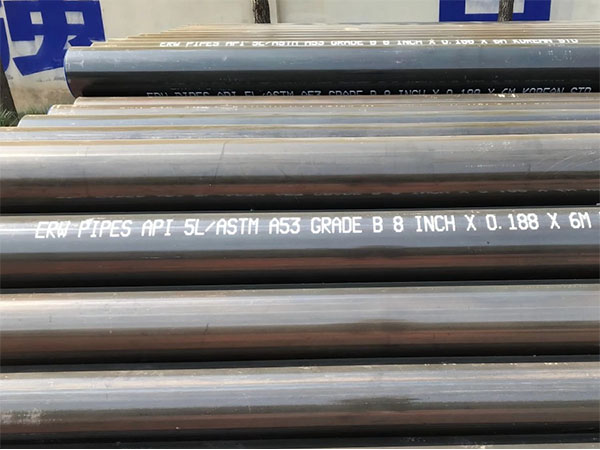
Type and Grade
|
Standard |
Type |
Grade |
|
API 5L |
PSL1/PSL2 |
PSL1:Common steel grades L290 PSL2:X42-X80 |
|
ASTM A53 |
Type F Type E Type S |
Grade A Grade B |
Chemical composition comparison between API 5L and ASTM A53
API 5L:
PSL1 steel Grade (e.g. Grade B) : C ≤ 0.28%, Mn 0.9-1.2%, Si ≤ 0.45%.
PSL2 steel grades (such as X42 - X80) : In addition to meeting the requirements of PSL1, the control over elements like sulfur and phosphorus is more stringent, and the range of additional alloying elements and deoxidation state requirements must also be met.
ASTM A53:
C ≤ 0.30%, Mn ≤ 0.45%, P ≤ 0.035%, S ≤ 0.04%.
Grade B has A higher content of carbon and manganese than Grade A, which can significantly enhance the strength of the pipe.
Comparison of mechanical properties
Minimum yield strength: API 5LGradeB (PSL1) :241MPa, API 5L X Grade (PSL2) : 290-550MPa; ASTM A53 Grade A: 205MPa, ASTM A53 Grade B: 241MPa.
Minimum tensile strength: API 5LGradeB (PSL1) :415MPa, API 5L X Grade (PSL2) : 455-620MPa; ASTM A53 Grade A: 330MPa, ASTM A53 Grade B: 415MPa.
Comparison of inspection and testing
API 5L PSL1
Conduct a hydrostatic test and chemical composition inspection on each pipe.
API 5L PSL2
In addition to the hydrostatic test, 100% X-ray or ultrasonic testing is required. All steel grades except X80 were subjected to impact at -0 ℃, with longitudinal ≥101 J and transverse ≥68 J.
ASTM A53
Non-100% hydrostatic testing is allowed as a substitute; 100% non-destructive testing and impact testing are not required.
Comparison of application fields
API 5L
It is specifically designed for oil, natural gas and other transportation pipelines, especially suitable for long-distance and high-pressure environments.
ASTM A53
It is applicable to general low-pressure transportation (steam, water, air), mechanical structures and heat exchanger pipelines. It is also commonly found in building water supply and drainage as well as HVAC systems.
Summary
API 5L is designed for oil and gas pipelines and is divided into PSL1 (basic) and PSL2 (reinforced). Suitable for scenarios with high pressure, long distance and high toughness requirements. ASTM A53 is a general-purpose carbon steel pipe with various manufacturing methods, suitable for low and medium pressure transportation and structural applications; Moderate strength and high cost performance. When choosing pipe materials, a reasonable selection should be made based on factors such as fluid type, temperature and pressure environment, compliance with standards and economy.